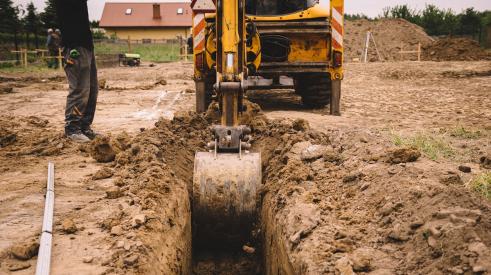An important provision of tax legislation recently passed by Congress would expand funding for the Low-Income Housing Tax Credit (LIHTC) program, spurring the creation of 28,000 additional units of affordable rental housing every year.
The impact of this increase would extend well beyond the original construction phase to include income earned and spent by workers and businesses tied to each newly created apartment building. For example, in a typical area, an additional 100 tax-credit apartments would generate about $5.2 million in local income, $579,000 in new local taxes and 122 jobs per year.
We’re talking here about a provision of the same tax bill whose critics claim only benefits the wealthy. The fact is that Congress’ proposal to expand LIHTC funding is a change that would benefit wage earners across the economic spectrum. Here’s how the LIHTC works: by pledging to reserve units for people earning 60% or less of the local area’s median income, at rents not exceeding 30% of the renter’s income, investors in apartment buildings receive special tax credits, which they can in turn sell or use themselves. In this way, private companies can create affordable new and rehabilitated apartments for low-income renters through an indirect subsidy. It’s an efficient financing mechanism, and one of the few tools in existence for getting this kind of housing built.
The case in favor of expanded LIHTC funding gets even stronger when you consider that the gain is long overdue. In fact, the current LIHTC cap of $1.25 per capita has not been adjusted since the program began in 1986. Meanwhile, inflation has cut the credits’ purchasing power in half. By increasing state LIHTC allocations by a mere 50 cents per resident--to $1.75 per capita--Congress would expand total funding for the program by $3.8 billion over a 10-year period, enabling the creation of 980,000 low-income apartments during that time. This would be a big step toward meeting the needs of some 5.3 million households identified by HUD last year as having "worst case" needs. These are unassisted renters with incomes below 50% of the local median who pay more than 50% of their income for rent or who live in severely substandard housing.
The LIHTC is an important tool in the effort to house low- and moderate-income Americans. It’s time we sharpened it to make it even more effective in the fight to provide a decent and affordable home for every family in this country. Tell your congressional representatives that you support increased funding for LIHTC as an essential component of any tax legislation enacted this year. It’s worth fighting to ensure that this important provision survives the political wrangling to come.
Also See:
Just Like Lits, Solutions Are Few and Far Between
Report Lists Most Sprawl-Threatned Cities
Portland, Ore. Gets Façade Lift
Advertisement
Related Stories
Land Planning
Helena Habitat for Humanity Aims to Build 1,000 Affordable Homes
A new Habitat for Humanity project in Helena, Mont., aims to deliver 1,000 affordable housing units and outdoor community amenities
Government + Policy
How Eminent Domain May Be Used to Respond to Climate Crises
Eminent domain, which grants the government power to take private property for public use, has displaced thousands of Americans for the sake of infrastructure in the past, but it may be used for a better purpose in a global climate crisis
Q+A
Soil Connect Is Moving Dirt and Building Relationships
Cliff Fetner created Soil Connect so builders and developers could more easily move dirt and other aggregates from jobsite to jobsite, but it has expanded to become something much more






